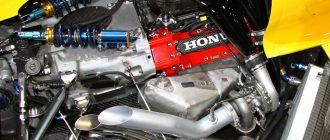Are All Car Engines 4 Stroke?
The vast majority of car engines are four-stroke engines. This means that they complete four strokes for every two revolutions of the crankshaft. The four strokes are:
- Intake stroke: The intake valve opens and the piston moves down the cylinder, drawing in air and fuel.
- Compression stroke: The intake valve closes and the piston moves up the cylinder, compressing the air and fuel mixture.
- Power stroke: The spark plug ignites the air and fuel mixture, causing it to explode and drive the piston down the cylinder.
- Exhaust stroke: The exhaust valve opens and the piston moves up the cylinder, pushing the exhaust gases out of the cylinder.
There are several advantages to using a four-stroke engine in a car.
- Efficiency: Four-stroke engines are more efficient than two-stroke engines, meaning that they use less fuel to produce the same amount of power.
- Emissions: Four-stroke engines produce fewer emissions than two-stroke engines, which helps to reduce air pollution.
- Smoothness: Four-stroke engines run more smoothly than two-stroke engines, which makes for a more comfortable driving experience.
However, there are also some disadvantages to using a four-stroke engine in a car.
- Cost: Four-stroke engines are typically more expensive to manufacture than two-stroke engines.
- Weight: Four-stroke engines are heavier than two-stroke engines, which can affect a car’s performance and fuel economy.
Overall, the advantages of using a four-stroke engine in a car outweigh the disadvantages. This is why the vast majority of car engines are four-stroke engines.
Exceptions to the Rule
There are a few exceptions to the rule that all car engines are four-stroke engines.
- Some high-performance engines are two-stroke engines. Two-stroke engines are lighter and more powerful than four-stroke engines, which can give them a performance advantage.
- Some small engines, such as those used in lawnmowers and chainsaws, are two-stroke engines. Two-stroke engines are simpler and less expensive to manufacture than four-stroke engines, which makes them a good choice for small engines.
However, two-stroke engines are not as efficient or clean as four-stroke engines, which is why they are not used in most cars.
Conclusion
The vast majority of car engines are four-stroke engines. Four-stroke engines are more efficient, cleaner, and smoother than two-stroke engines. However, there are a few exceptions to this rule, such as some high-performance engines and small engines.




